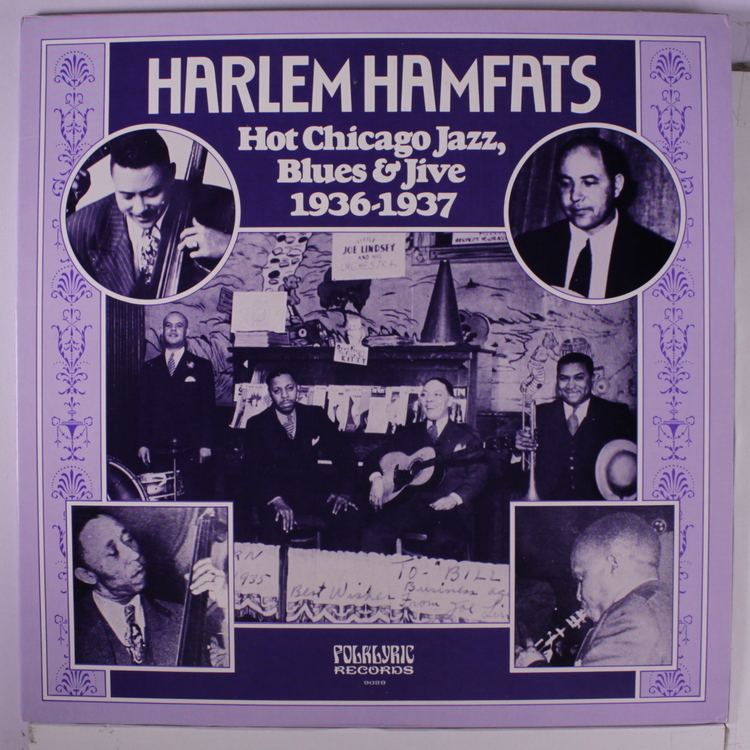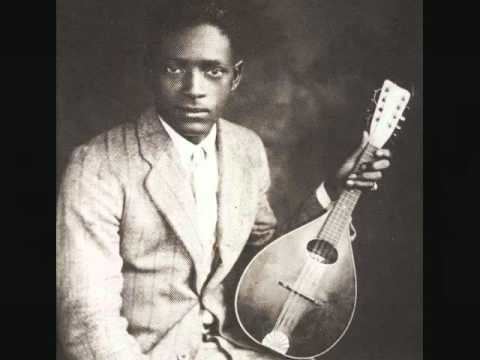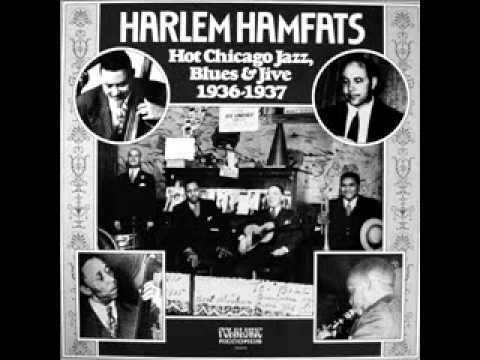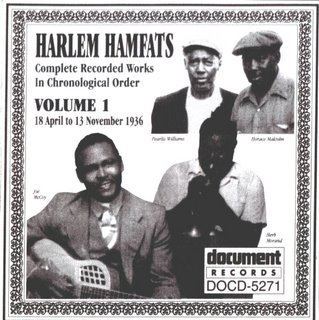Years active 1936–1938 Active until 1938 | ||
 | ||
Past members Kansas Joe McCoyPapa Charlie McCoyHerb MorandJohn LindsayOdell RandHorace MalcolmFreddie FlynnPearlis Williams Albums Weed Smoker's Dream, R&B Pioneers Similar | ||
Weed smoker s dream harlem hamfats
The Harlem Hamfats was a Chicago jazz band formed in 1936. Initially, they mainly provided backup music for jazz and blues singers, such as Johnny Temple, Rosetta Howard, and Frankie Jaxon, for Decca Records. Their first record, "Oh! Red", became a hit, securing them a Decca contract for fifty titles, and they launched a successful recording career performing danceable music.
Contents
- Weed smoker s dream harlem hamfats
- Harlem hamfats i m so glad full compilation album 1983
- Biography
- Songs
- References

The group's inclusion in the dirty blues genre is due to such songs as "Gimme Some of that Yum Yum" and "Let's Get Drunk and Truck".

Harlem hamfats i m so glad full compilation album 1983
Biography

The Harlem Hamfats were not from Harlem, nor were they "hamfats" (early 20th-century slang, used in a derogatory sense for something considered second rate or a poor substitute for something of higher quality). There is some disagreement about the roots of the word. Some believe it refers to a cut of ham that was cheaper and of poorer quality than the lean part. It has been suggested that ham fat was used by poor country musicians to grease the cork on their instruments, whereas city slickers could easily find and afford cork grease. Others hold that it refers to the ham fat used by blackface comedians to make their burnt cork makeup adhere. Regardless, the name was most likely adopted in a facetious spirit, since the band members were talented musicians.

Despite their name, the Hamfats were based in Chicago. They were assembled by record producer and entrepreneur J. Mayo Williams for the purpose of making records — perhaps the first group to be so created. None of the members of the band were actually from New York. Kansas Joe McCoy (guitar, vocals) and his brother Papa Charlie McCoy (guitar, mandolin) were from Mississippi; Herb Morand (trumpet, vocals), John Lindsay (bass), and Odell Rand (clarinet; 1905 – 22 June 1960) were from New Orleans; Horace Malcolm (piano), Freddie Flynn (drums) and Pearlis Williams (drums) were from Chicago.
The diverse geographical backgrounds of the musicians played a role in the band's sound, which blended blues, dixieland and swing jazz. Led by Morand and Joe McCoy, the main songwriters, the group initially provided instrumental backing to Williams's stable of artists, including Frankie Jaxon, Rosetta Howard, and Johnny Temple. They were perhaps the first studio recording band to become a performing act in their own right, and they recorded extensively.
Their first hits were "Oh! Red", recorded in April 1936, and "Let's Get Drunk and Truck" (originally recorded by Tampa Red), recorded in August of the same year. "Oh! Red" was popular enough to be covered by Count Basie, the Ink Spots, Blind Willie McTell, various Western swing bands, and, Howlin' Wolf. Some of their other recordings, such as "We Gonna Pitch a Boogie Woogie", more clearly presage the rhythms of rock and roll. Their most recognizable work may be the modern jazz tune "Why Don't You Do Right?", written by Joe McCoy and included on their 1936 record under the title "The Weed Smoker's Dream". The song contains numerous references to drugs. The lyrics were later changed and the tune refined. Lil Green recorded it as "Why Don't You Do Right", a song about a conniving mistress and her broke lover, in 1941, and it was later recorded by Peggy Lee with the Benny Goodman Orchestra.
By 1939, singer Morand had returned to New Orleans, and changing fashions had made the sound of the Harlem Hamfats less commercially attractive. The band was not considered the most innovative group of the time, and many of their original works dealt with sex, drugs and alcohol, which may have prevented its music from being more widely available. However, as a small group playing entertaining music primarily for dancing they are considered an important contributor to 1930s jazz, and their early riff-based style would help pave the way for Louis Jordan's small-group sound a few years later, rhythm and blues, and later rock and roll.
Songs
Weed Smoker's DreamNew Orleans to Harlem · 1995
Oh! RedNew Orleans to Harlem · 1995
Let's Get Drunk and TruckNew Orleans to Harlem · 1995
